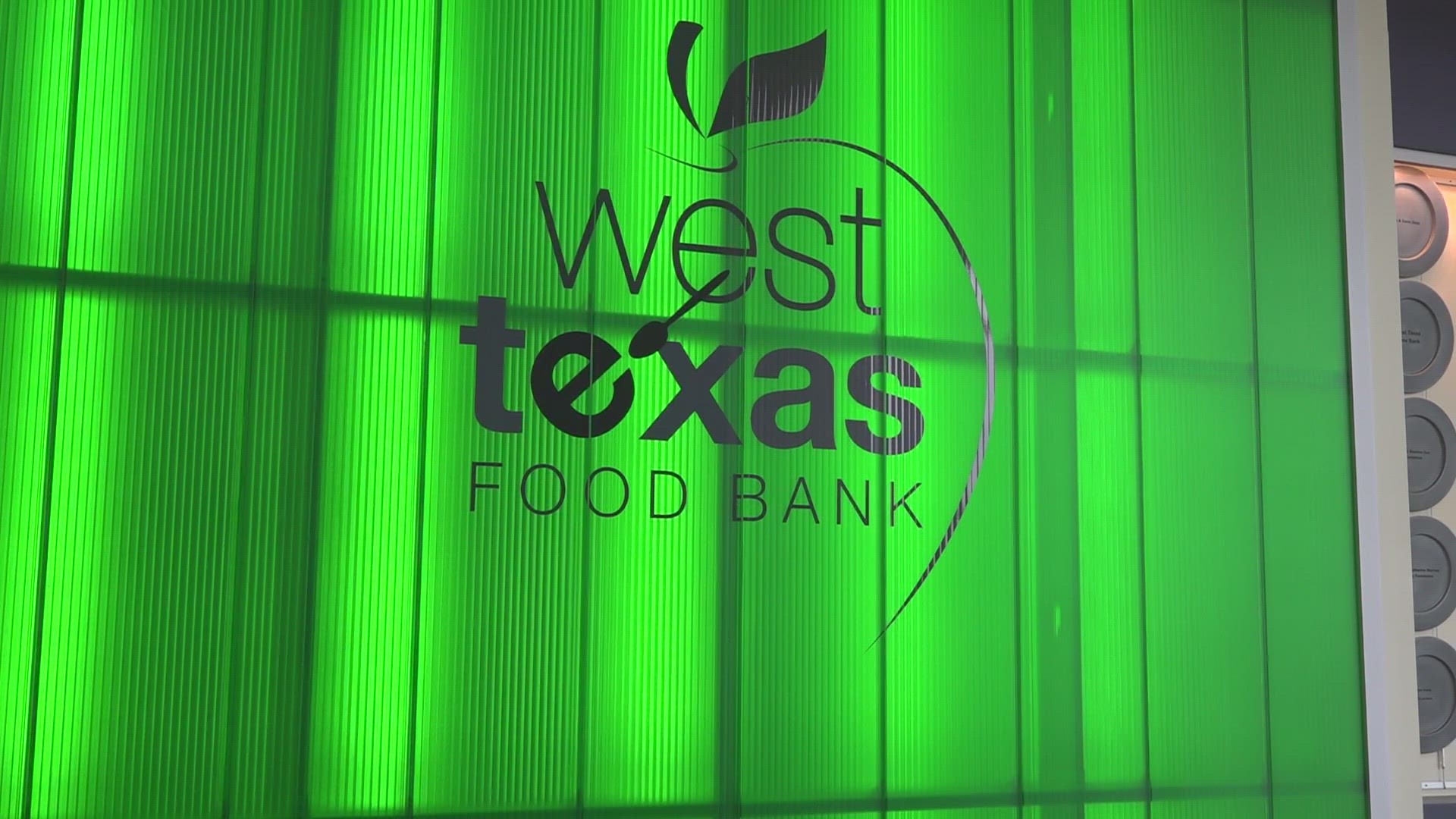MIDLAND, Texas — At the start of March, benefits from the Supplemental Nutrition Assistance Program, or SNAP, decreased from where they were during the COVID-19 pandemic.
After just a little over one week has passed, the West Texas Food Bank has already seen the impacts of that change.
The food bank has already seen a 23% increase for the need in the community since SNAP benefits were lowered, and that increase is just in the Midland-Odessa food pantries.
While this recent challenge has made things more difficult, it’s just one of many factors that will impact the food bank moving forward.
“I think for us to be able to keep up with the increase that we’ve seen within our food bank over the last three years, one thing has always been to plan for the worst and hope for the best, and we continue to do that here at the West Texas Food Bank," said Libby Campbell, CEO of the West Texas Food Bank.
From the COVID-19 pandemic, to weather, to inflation, the food bank has been tested as of late to maintain service to its 19 counties who might need their help.
Through that adversity, they have been forced to prepare for tough times, and with a decrease in SNAP benefits, they were proactive in dealing with hardship yet again.
“We were able to procure more fresh produce to be brought in, so we were anticipating that need," said Campbell. "We had more volunteers brought in over the last week, and we were actually able to – back in January – we started purchasing more shelf-stable product. Just to make sure that we had things on our shelves that if we didn’t need them, they would last for six or seven months – we wouldn’t have to worry about expiration dates – but if we did need more of something, we were already prepared, and that seemed to be one of the best things we were able to do.”
Up over 100,000 pounds of food is being distributed by the food bank compared to this time last year, with rural areas seeing the most need with lower accessibility to resources.
“We have the highest inflation in 40 years," said Campbell. "We have supply chain issues still. We have a war in Ukraine and Russia that’s affecting fertilizer and growth of crops. You keep going through all the different problems that we have, SNAP benefits being cut, we have to have the support of our community to be able to meet the needs that are being created in the environment around us.”
And with the United States Department of Agriculture, or USDA, predicting an increase of 8.6% in the cost of groceries throughout the year, the food bank understands the position it is in as more West Texans may turn to them.
“I don’t think it’s going to get better in the next month," said Campbell. "I don’t think it’s going to get better in the next nine months. I think that this is something that we are going to have to deal with ongoing, and how do we continue to be prepared and deal with these problems is we continue to do the best we can about telling our story about why we need, not only volunteer time, because we could not do what we do without the support of our volunteers everyday, and also, if you can give a dollar please donate a dollar.”
There are several ways to support the food bank, such as donating food, money or time by going to their website wtxfoodbank.org.
Their website also provides options for those who are in need of food assistance.

